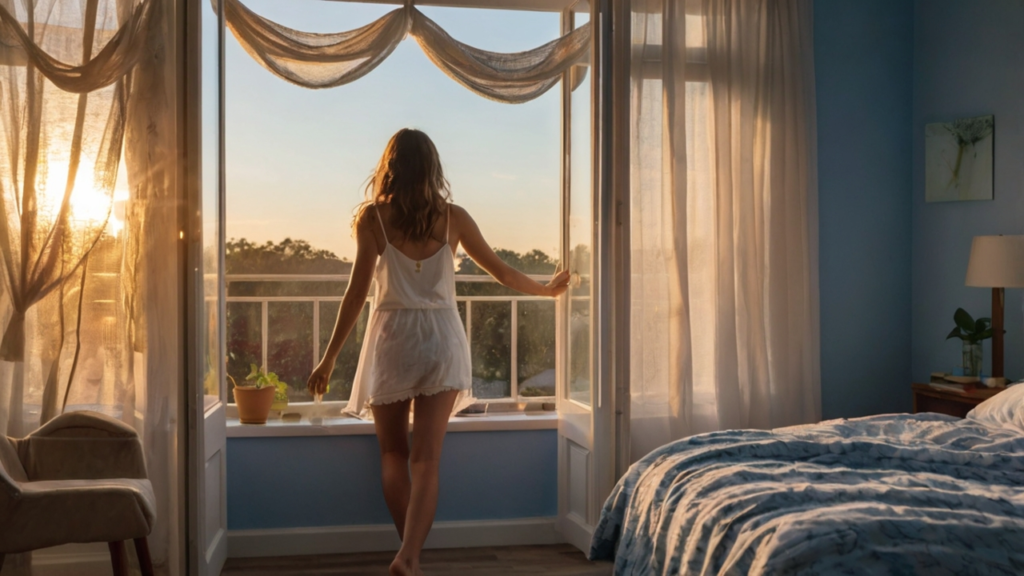From Minimalist to Maximalist: How to Adapt Your Style to Your State of Mind
In the ever-changing world of fashion, the connection between our internal states and external expressions has never been more vibrant. As we move closer to 2025, the pendulum swings between minimalist and maximalist styles, reflecting wider societal shifts and personal transformations. This article explores how to adapt your style to your state of mind, providing insights into fashion adaptation, style transformation, and the seamless integration of mood and fashion, ultimately creating a deeply individualistic approach to self-expression.

The Evolution of Personal Style
Minimalist Style: A Reflection of Serenity and Order
Minimalist style, characterized by its simplicity, clean lines, and monochromatic palette, has long been a reflection of a calm and orderly state of mind. Those who embrace minimalist style value efficiency, functionality, and the beauty of simplicity. This approach to fashion, which truly emphasizes the importance to adapt your style to your state of mind, focuses on the essentials and creates a timeless wardrobe that transcends seasonal trends.

Recent Statistics: In 2023, a survey revealed that 65% of individuals favored minimalist fashion for its sustainability and ease of decision-making in the morning, highlighting a growing awareness of environmental impact and a desire for a simplified lifestyle.
Maximalist Style: An Ode to Exuberance and Complexity
Conversely, maximalist style is an exuberant celebration of color, pattern, and texture. It’s a fearless expression of personal identity, with each ensemble telling a story of individuality and creativity. Maximalism encourages us to adapt your style to your state of mind, embracing abundance, mixing and matching, and finding joy in the details.
Recent Statistics: In 2024, fashion runways were dominated by maximalist aesthetics, with 75% of designers incorporating vibrant patterns, bold textures, and eclectic accessories into their collections, signaling a shift towards more expressive and personalized fashion statements.
Adapting Fashion to Your Emotional State
Understanding Mood-Driven Fashion
The concept of mood-driven fashion acknowledges the profound impact our emotional state has on our style choices. Whether consciously or subconsciously, the clothes we choose to wear can be a way to adapt our style to our state of mind, serving as a form of emotional expression or even modulation.
The Role of Self-Expression in Style
Self-expression through fashion is a powerful tool for conveying our identity and mood to the world. It’s about adapt your style to your state of mind, dressing how you feel or how you aspire to feel, and using your wardrobe as a medium for storytelling and personal exploration.
Strategies for Style Transformation
Adapting your style to reflect your current state of mind doesn’t have to be daunting. Here are some strategies to navigate the fluidity between minimalist and maximalist styles, ensuring your wardrobe is as versatile and adaptive as you are.
1. Identify Your Core Style
Begin by understanding your core style preferences. Do you lean towards the simplicity and elegance of minimalism, or do you gravitate towards the bold and eclectic nature of maximalism? Recognizing your baseline will serve as a foundation for your style transformation.
2. Build a Versatile Foundation Wardrobe
Create a wardrobe that includes versatile pieces that can swing between minimalist and maximalist aesthetics. Key pieces might include a classic white shirt, a tailored blazer, statement accessories, and bold patterned pieces. This ensures you have the flexibility to adapt your style as your mood dictates.
3. Embrace Accessories
Accessories are a powerful tool for transitioning between styles. A statement necklace or a vibrant scarf can instantly transform a minimalist outfit into a maximalist masterpiece, and vice versa.
4. Experiment with Layers
Layers add depth and complexity to any outfit. A minimalist look can be elevated with the addition of textured layers or a pop of color, while a maximalist ensemble can be toned down by removing layers or incorporating neutral pieces.
5. Play with Color and Pattern
Color and pattern are integral to both minimalist and maximalist styles. Experiment with monochromatic schemes for a minimalist look or mix patterns and bold colors for a maximalist effect.
6. Adapt to Your Emotional Landscape
Listen to your emotional landscape and allow it to guide your fashion choices. Some days you may feel the need for the comfort and simplicity of minimalist fashion, while on others, you might find joy and energy in the vibrancy of maximalist style.
The Future of Fashion Adaptation
Looking ahead to 2025, the trend towards fashion adaptation and style transformation continues to gain momentum. More and more, individuals are recognizing the importance to adapt your style to your state of mind, seeking ways to align their external appearance with their internal state, leading to a more nuanced and personalized approach to fashion.
Embracing Versatile Fashion
The concept of versatile fashion, which allows for easy transitions between styles, is at the forefront of this movement. Designers and brands are responding by creating adaptive clothing lines that cater to the fluid nature of personal style and emotional expression, helping individuals adapt your style to your state of mind, ensuring outfits resonate with your ever-changing moods and personal transformations.
The Rise of Emotional Style: How to Adapt Your Style to Your State of Mind
The recognition of the interconnectedness of style and emotions is paving the way for the rise of emotional style – a more introspective approach to fashion that embraces the full spectrum of human emotion and expression.
“Fashion allows us to express our deepest emotions through the clothes we wear.” – Fashion Expert (Quora)
Dress for the You of Today
The journey from minimalist to maximalist style is about more than just changing clothes; it’s about embracing personal identity and expression. As we navigate our emotional landscapes, our wardrobe becomes a canvas for self-exploration and transformation. By adopting mood-driven fashion, we create a more authentic form of expression that adapts to our ever-changing lives.
In fashion, there are no rules, only expressions. Whether drawn to minimalism or maximalism, remember that your style reflects your state of mind. Embrace the fluidity of your style and let your fashion choices mirror your emotions and experiences. As we approach 2025, fashion is becoming more adaptive, versatile, and personal.



